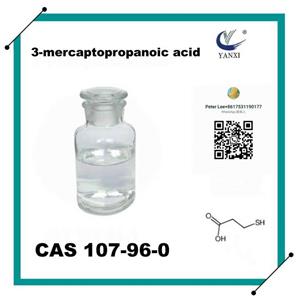Build green hydrogen chemical system
Our company has a good reputation in pharmaceutical Chemical area,we can provide high quality, high purity and competitive price product for you. Looking forward to your enquiry.
Main products
The chemical sector is the main carbon emitting sector in national production, and it is also one of the most difficult sectors to decarbonize. In China, the chemical industry such as synthetic ammonia and synthetic methanol consumes up to 20 million tons of hydrogen every year, and almost all of its upstream raw materials come from fossil energy sources such as coal and natural gas. In the context of the "dual carbon" goal, the chemical sector is facing huge pressure to reduce carbon, and promoting renewable energy to replace traditional fossil energy hydrogen production is a key measure to accelerate the low-carbon transformation of China's chemical sector.
Hydrogen energy has the dual attributes of energy carrier and industrial raw materials, electric hydrogen collaboration can promote the integration of renewable energy power generation and chemical industry, and then create a green hydrogen chemical system based on renewable energy. In March 2022, the National Development and Reform Commission and the National Energy Administration issued the Medium and Long-Term Plan for the Development of Hydrogen Energy Industry (2021-2035), pointing out that "to explore and carry out renewable energy hydrogen production in ammonia, methanol, refining, coal to oil and gas and other industries to replace fossil energy demonstration". In April 2022, the Ministry of Industry and Information Technology jointly issued the Guiding Opinions on Promoting the High-quality Development of the Petrochemical and Chemical Industry in the 14th Five-Year Plan, proposing to "encourage petrochemical and chemical enterprises to develop 'green hydrogen' in a reasonable and orderly manner according to local conditions, and promote industrial integration demonstration of refining, coal chemical industry and 'green electricity' and 'green hydrogen'". At the local level, as of now, more than 20 provinces and more than 60 prefecture-level cities have formulated hydrogen energy industry development plans, and the total capacity of renewable energy hydrogen production projects has reached 4.29 million tons, of which synthetic ammonia and synthetic methanol projects have become the key driving factors for green hydrogen demand. According to incomplete statistics, by the end of 2022, the domestic green ammonia project capacity has been planned to reach 3.4 million tons, the green alcohol project capacity is close to 4.5 million tons, and the total annual green hydrogen demand is close to 1.2 million tons.
However, there are still challenges in the production process, infrastructure and institutional mechanism of green hydrogen chemical industry based on electric hydrogen collaboration:
First, the upstream and downstream sections are discontinuous. The green hydrogen chemical chain is long, the operation mode is changeable, and the coupling between the fluctuating renewable energy power generation and the downstream chemical continuous process needs to weigh the technology selection and capacity configuration of each section. At present, both alkaline and proton exchange membrane electrolysis water hydrogen production devices have certain load fluctuation constraints, which is difficult to ensure large-scale, continuous and stable hydrogen energy supply. At the hydrogen end, from the perspective of operation safety, equipment life and economy, it is necessary to ensure the continuous and stable supply of hydrogen energy in the chemical industry. For example, the design operation time of synthetic ammonia projects is generally more than 7,000 hours/year, which is difficult to adapt to the characteristics of fluctuating renewable energy hydrogen production.
Second, there is a mismatch between supply and demand. China's green hydrogen resources and chemical production capacity space mismatch problem is prominent, wind power, photovoltaic power generation and other renewable energy enrichment areas are mainly concentrated in the western Inner Mongolia, Gansu, Qinghai, Xinjiang, Sichuan, Yunnan and other places, the local green hydrogen consumption space is limited, insufficient delivery capacity. The petrochemical production capacity is mainly distributed in the central and eastern coastal areas, and the green hydrogen resources are relatively limited. Western renewable energy can be transported to the central and eastern regions through new hydrogen pipelines or reformed natural gas pipelines, and can also be transported to the load terminal through UHV transmission channels in the form of green electricity, but the collaborative operation mode of electric hydrogen network needs to be studied.
Third, institutional mismatch. At present, China has not established a complete project management, grid-connected scheduling, electricity price policy and green certification standards for the green hydrogen industry chain, which bring difficulties to the orderly development of green hydrogen chemical industry.
Green hydrogen and chemical industry have great potential for collaborative development, and it is necessary to carry out the top-level design of green hydrogen chemical industry with systematic thinking. In the production link, the flexible storage and adjustment characteristics of green hydrogen should be given full play, and large-scale and high-proportion new energy consumption should be promoted. In the storage and transportation link, the feasibility of long-distance transmission of large-scale renewable energy through the electric hydrogen network is deeply demonstrated, so as to realize the complementary advantages of power transmission and hydrogen transmission, and improve the long-distance transmission efficiency of renewable energy. In the consumption link, focus on promoting the large-scale application of green hydrogen in the chemical industry, and encourage green hydrogen chemical pilot demonstrations such as green ammonia and green alcohol. At the policy level, it is recommended to increase support for the green hydrogen industry, focus on supporting technological innovation and achievement transformation, research and introduce electricity price subsidies and tax reduction policies for green hydrogen, strengthen the convergence of policies such as "double control" of energy consumption and "double control" of carbon emissions in the chemical industry, and explore and encourage green hydrogen consumption to be deducted in the relevant assessment. At the regulatory level, it is recommended to strengthen the research on the standard system covering the carbon footprint accounting of the whole supply chain for hydrogen energy preparation, storage and transportation, and application, study and formulate green hydrogen industry certification standards, establish and improve green hydrogen related laws, regulations and regulatory systems, actively participate in the formulation of international standards for green hydrogen, and support green hydrogen emission reduction into voluntary carbon emission reduction market trading.
At present, China is in the critical period of the construction of a new energy system. Hydrogen energy and a new electric power system are the core elements of the future carbon-neutral energy system. It is necessary to give full play to the unique role of hydrogen energy in the construction of a new energy system, fully tap the dual value of green hydrogen low-carbon energy and raw materials, and organically integrate green hydrogen with chemical industry through the collaboration of electric hydrogen. Promote the comprehensive replacement of renewable energy to fossil energy, and help achieve the goal of "dual carbon". (Reprinted by the Paper News)




